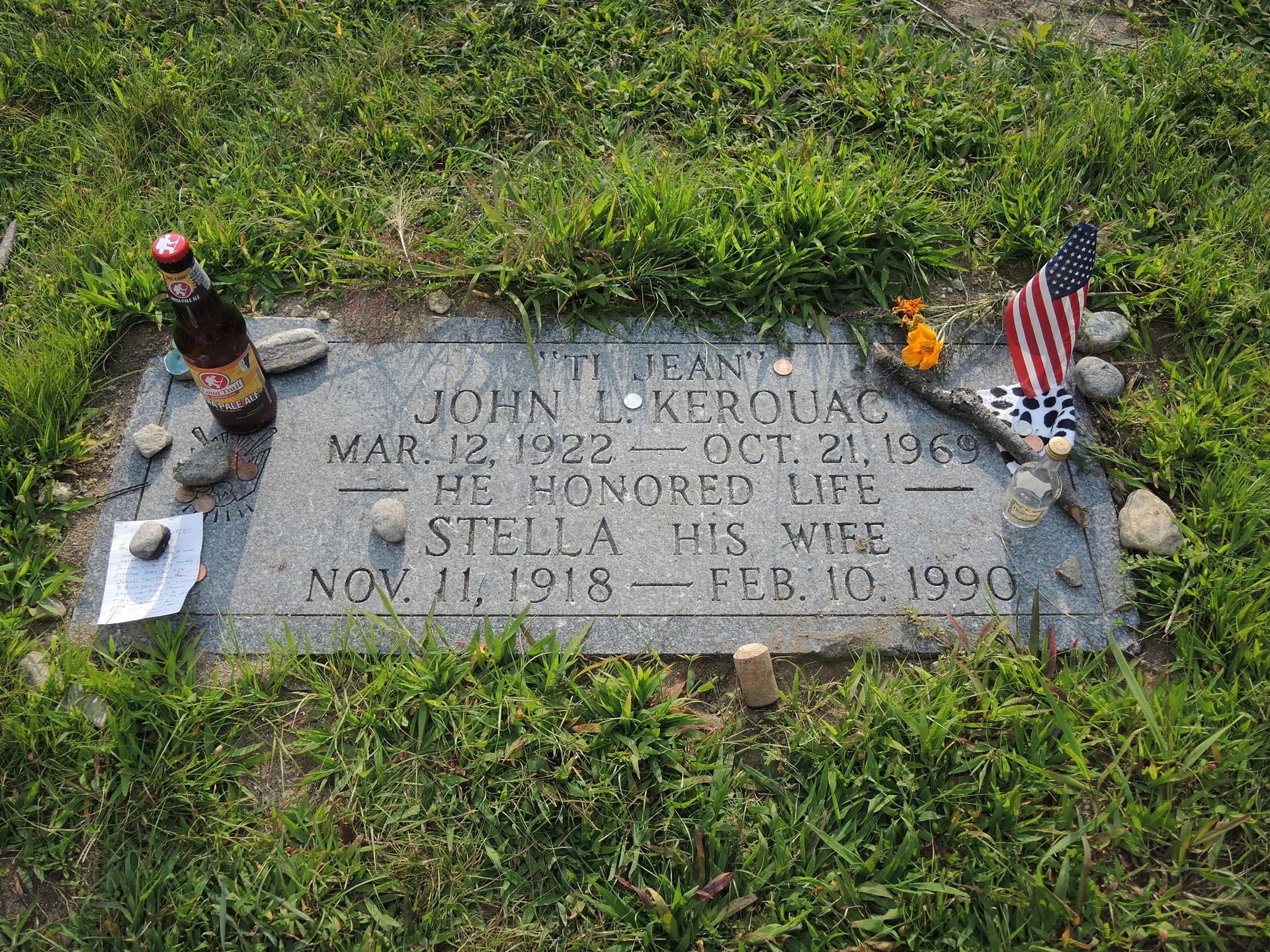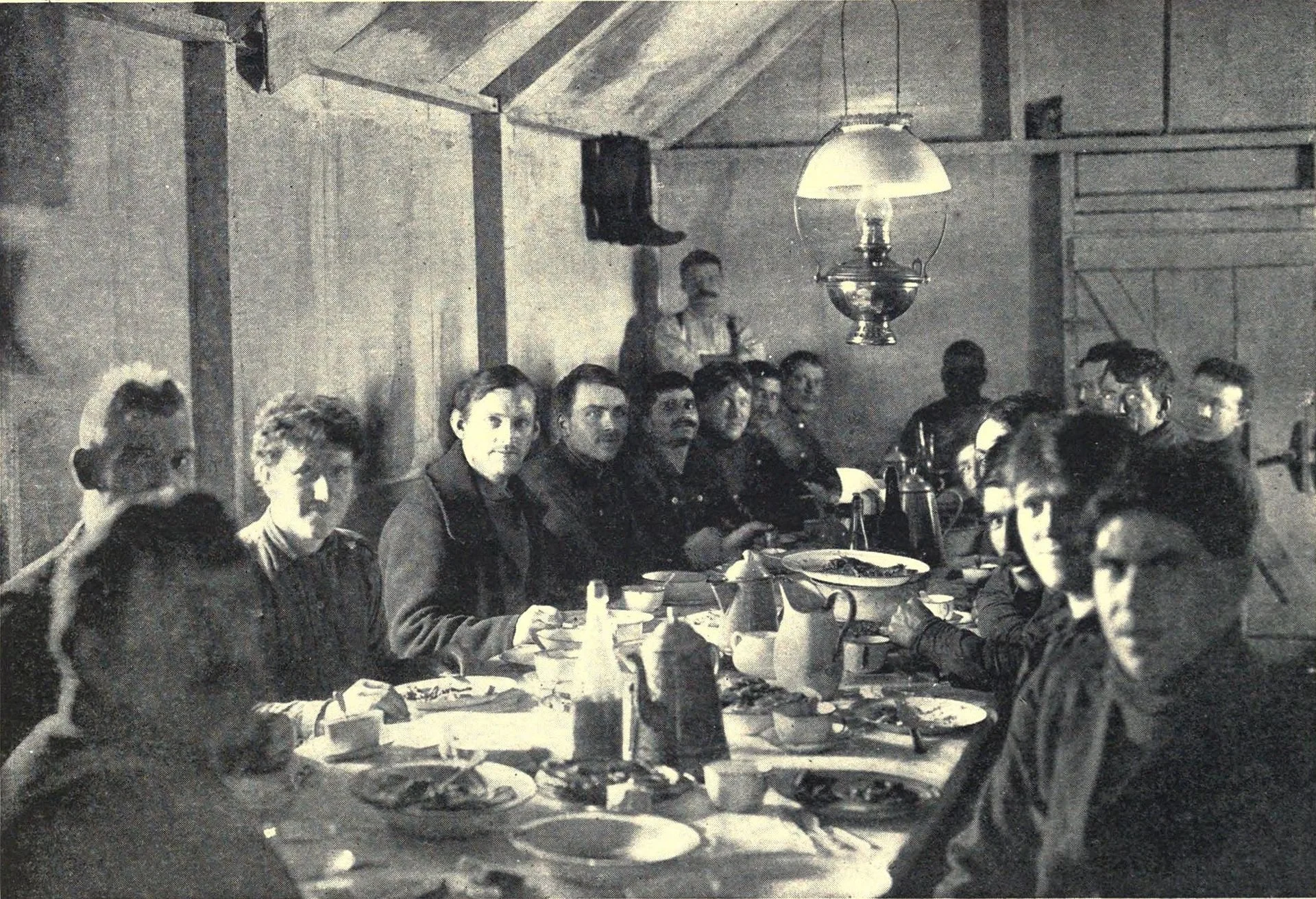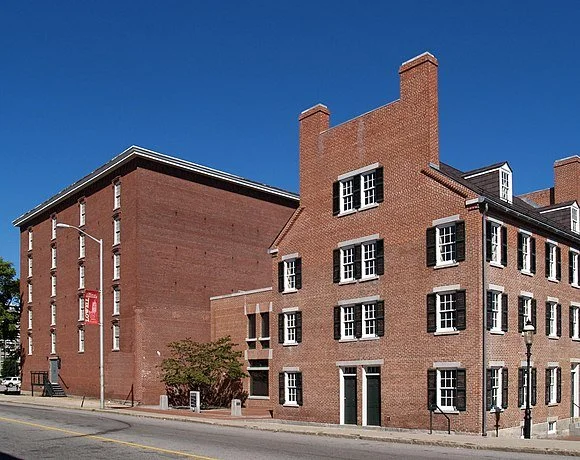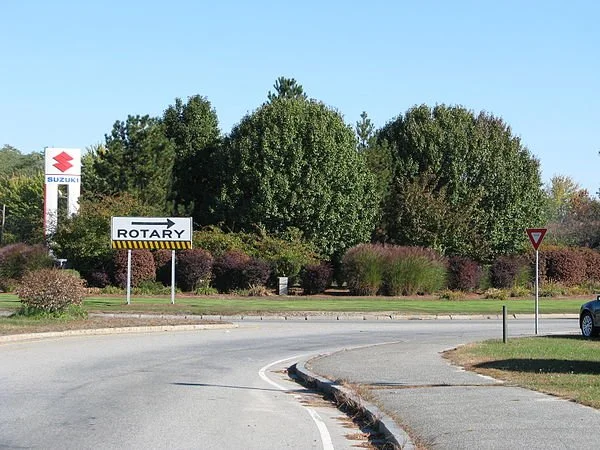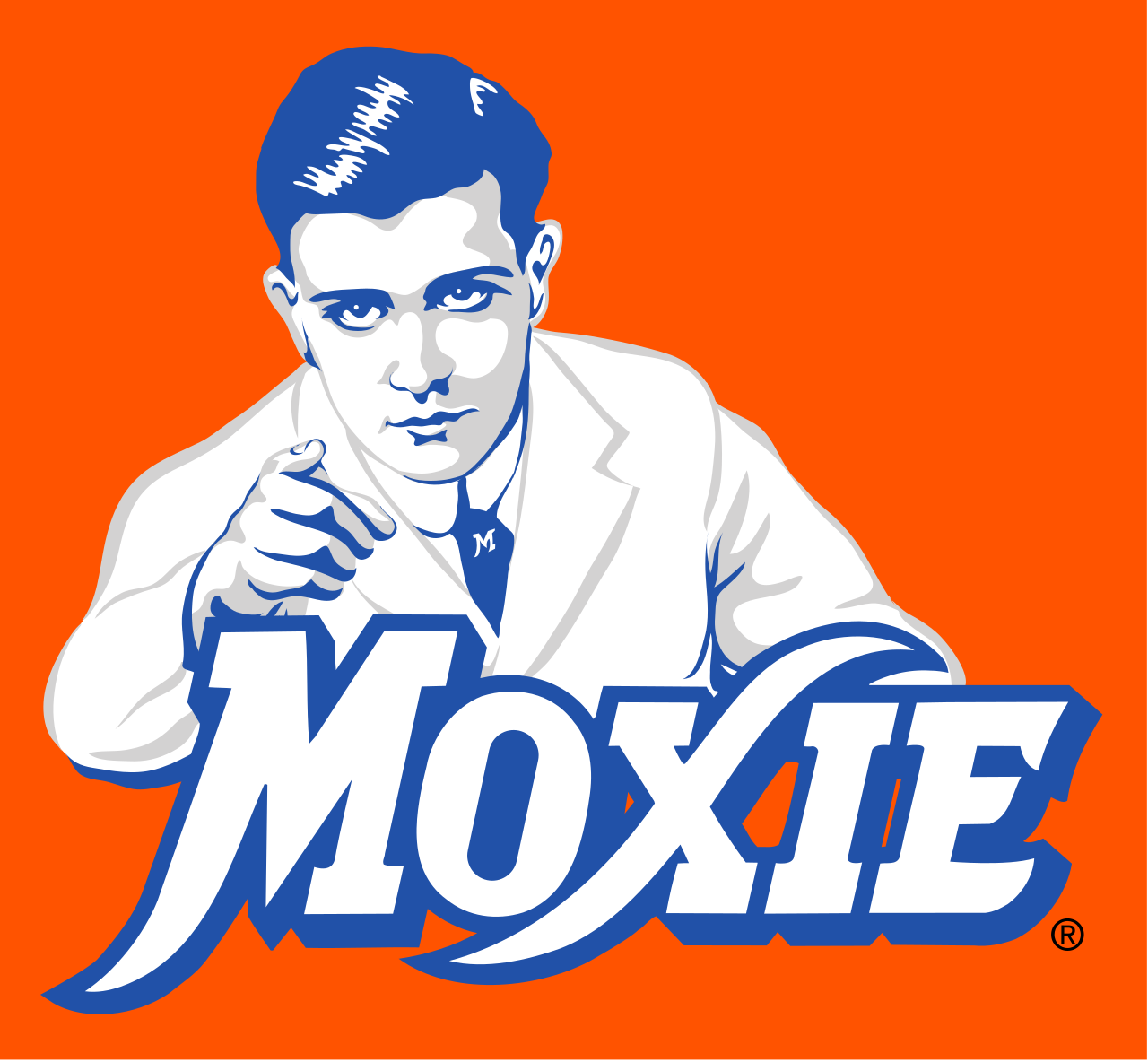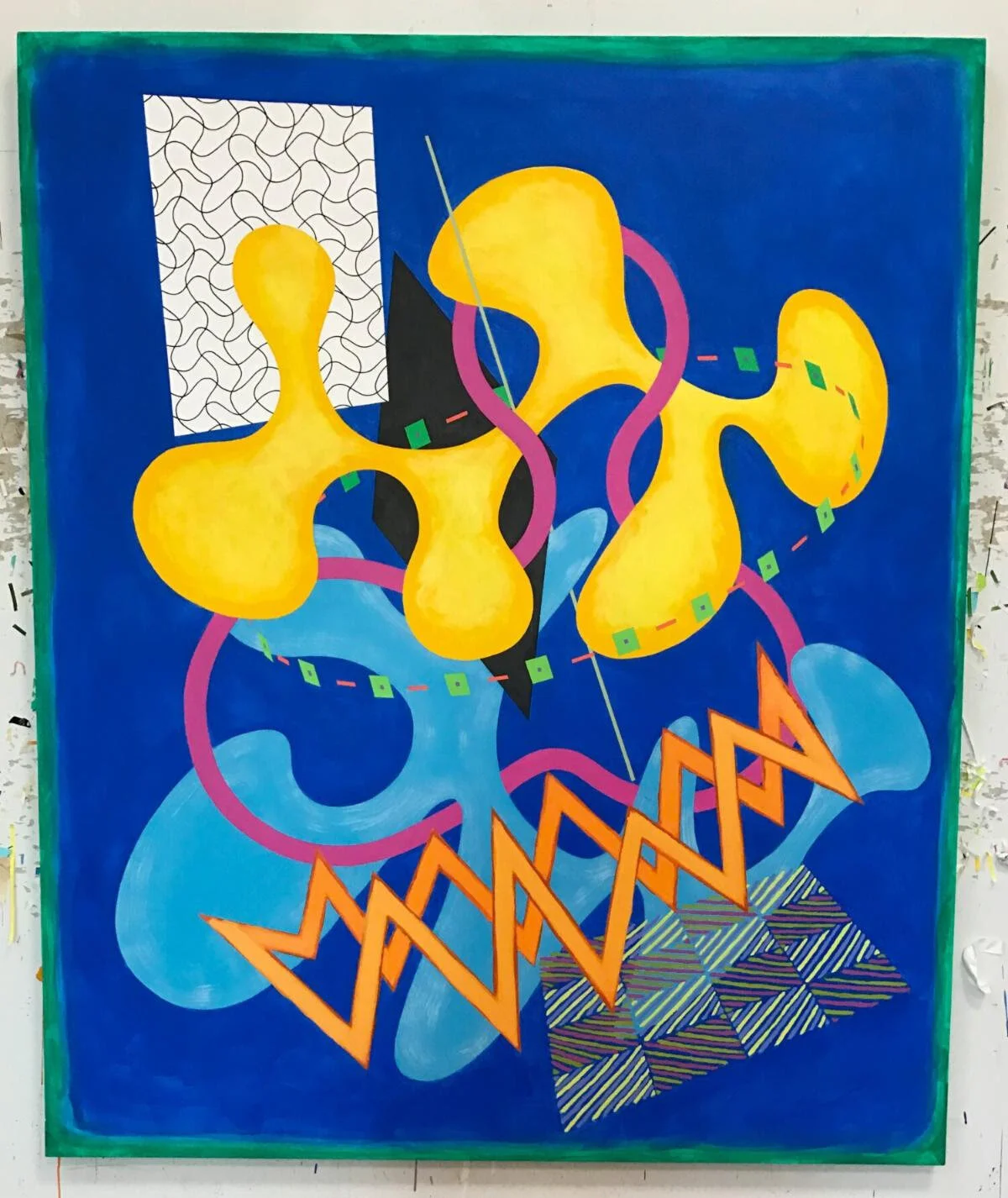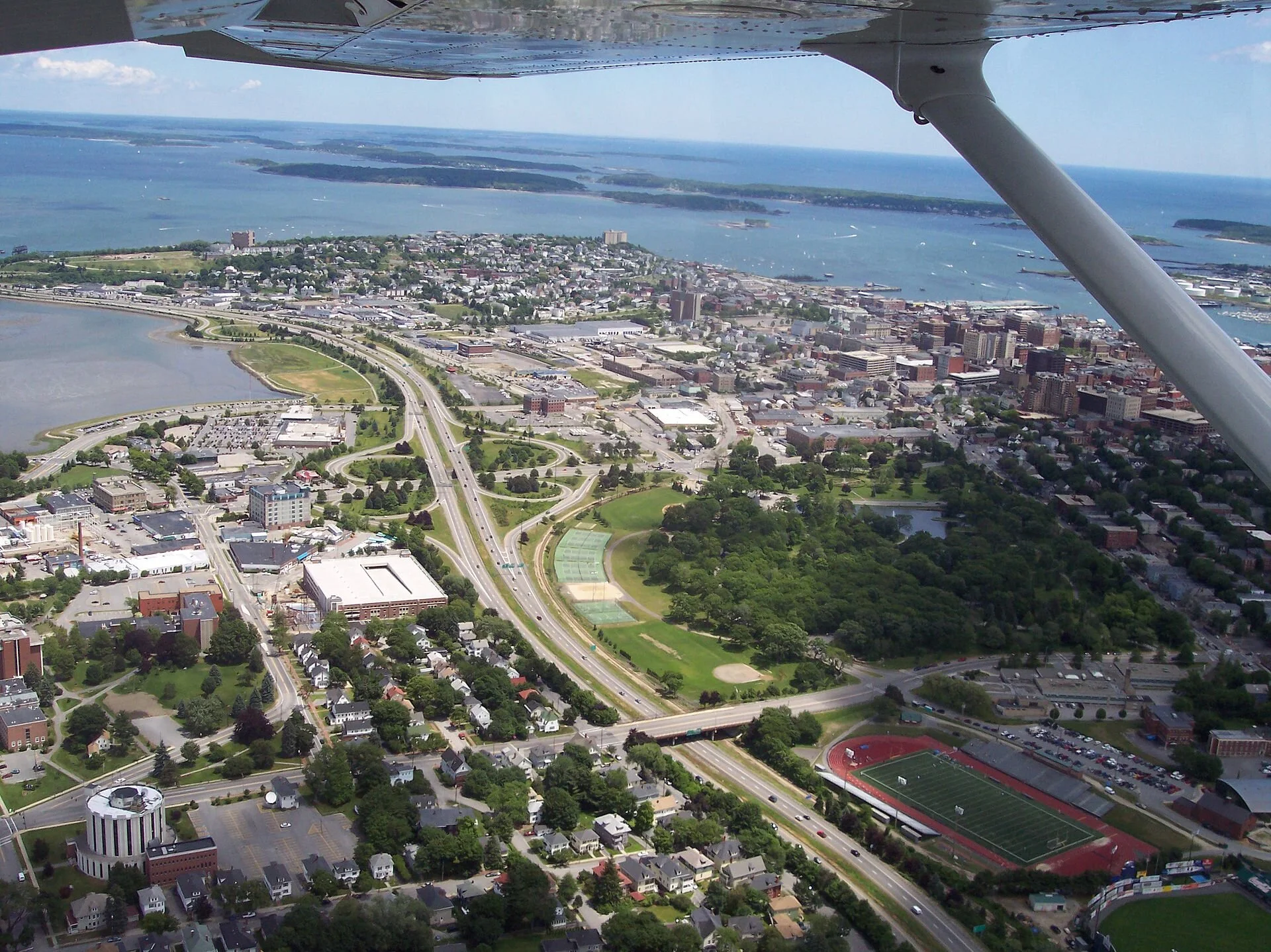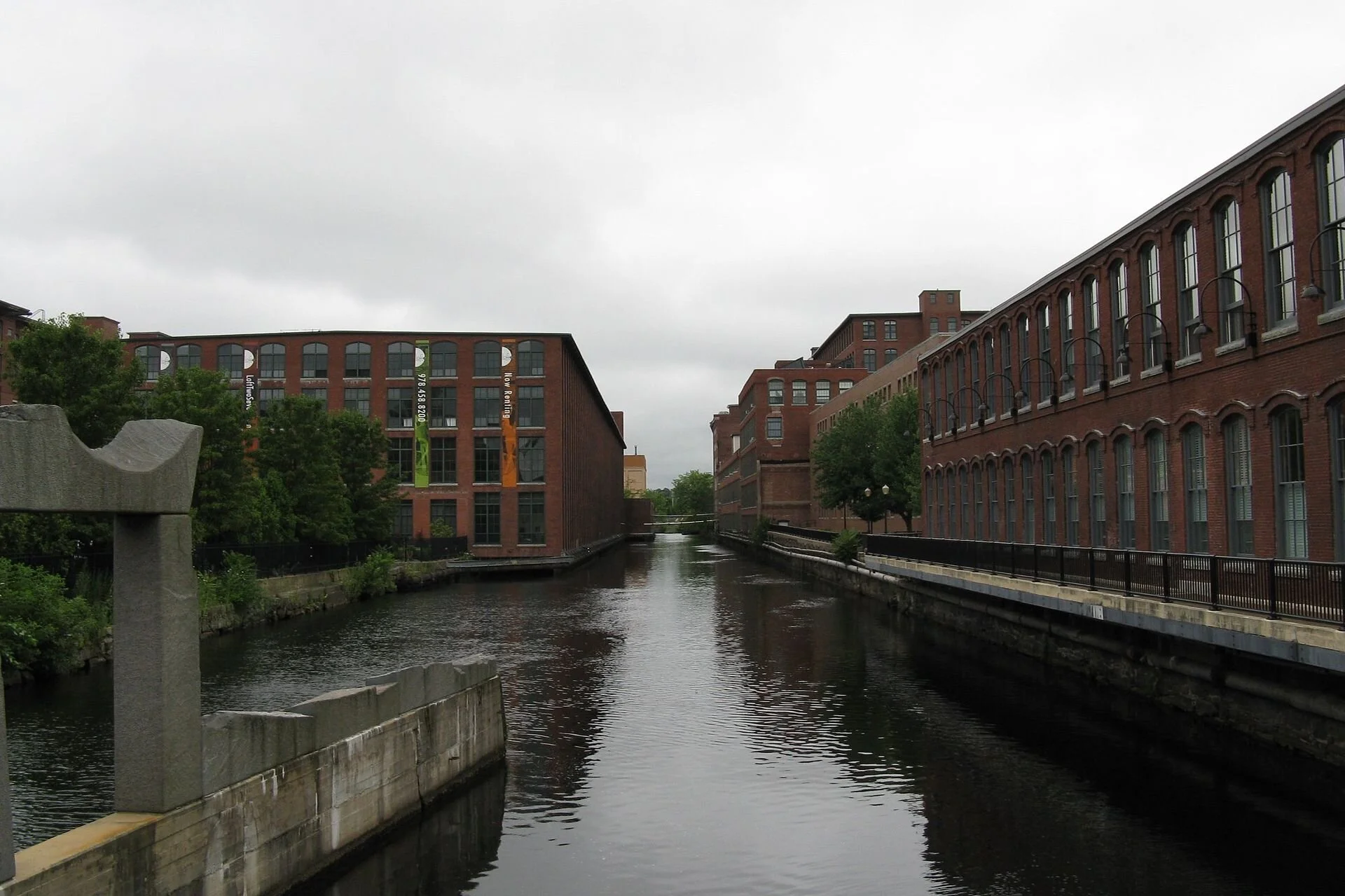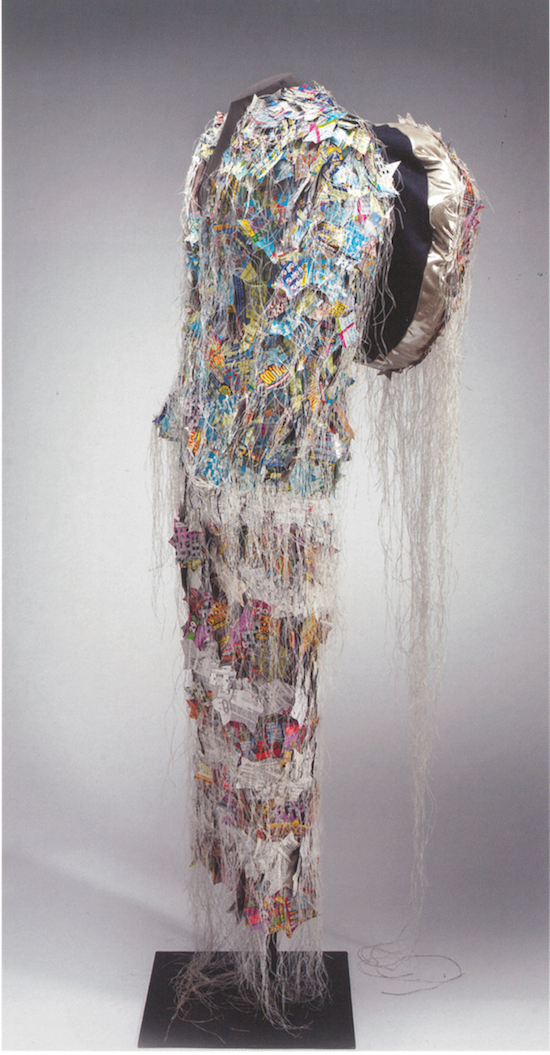
On deep background
“In the Beginning: My Cultural Heritage” (monoprint and chine colle), by Lowell, Mass.-based artist Jean Winslow in the group show “Expressions of Culture and Identity,’’ at the Brush Art Gallery and Studios, Lowell, through July 30.
The gallery says the show features the work of 23 artists from Massachusetts and New Hampshire who were invited to "explore their culture or personal identity through the visual arts." The theme aligns with a soon-to-be installed exhibit by the Lowell National Historical Park.
#Jean Winslow #Brush Art Gallery
‘September rain’
Jack Korouac’s grave in Edson Cemetery, Lowell
— Photo by DanielPenfield
“And what does the rain say at night in a small town, what does the rain have to say? Who walks beneath dripping melancholy branches listening to the rain? Who is there in the rain’s million-needled blurring splash, listening to the grave music of the rain at night, September rain, September rain, so dark and soft? Who is there listening to steady level roaring rain all around, brooding and listening and waiting, in the rain-washed, rain-twinkled dark of night?”
― Jack Kerouac (1922-1969), American novelist and poet, in his novel The Town and the City, The novel is set in the early Beat Generation circle of New York in the late 1940s and on Galloway, Mass., based on Lowell. The experiences of the young "Peter Martin" struggling for success on the high school football team are largely those of Jack Kerouac (he returns to the subject again in his last work, Vanity of Duluoz, published in 1968).
Use boarding houses to reduce housing problem
Early-20th-Century dinner in a miners' boarding house in northern Canada.
Adapted from Robert Whitcomb’s “Digital Diary,’’ in GoLocal24.com
Housing, its lack thereof and its expense, continues to be a big issue in Rhode Island. One way to alleviate the crisis in “affordable housing,’’ at least for single people, would be to encourage a revival of that old standby, the boarding house.
Or maybe call them dorms.
Put up buildings, subsidized or not, with one-bedroom units, each with a bathroom, bed, table, chair and utilities, including Internet. Obviously, you could provide far more units than with a conventional apartment house, which would attract developers.
There could be a central kitchen, maybe on each floor, with food lockers for each tenant and maybe some central lounge/living room.
Such housing would be particularly handy for young or other single people, retirees, people in transitory service jobs, and those between long-term housing. Building them near public transit would make them even more useful.
It might even reduce, a little, the pressure for sprawl development that the pandemic has depressingly accelerated, especially with the rapid increase in remote work, while helping to moderate housing-cost inflation. This sprawling is chewing up yet more countryside, increasing air and water pollution and stressing municipalities trying to serve a population that’s becoming even more spread out and car-dependent.
At right, one of the last remaining structures built as a boarding house for 19th Century textile workers in Lowell, Mass.. It’s now part of the Lowell National Historical Park.
Circling makes sense
Rotary sign at a Lowell, Mass., traffic circle. Note the ‘Yield’’ sign.
From Robert Whitcomb’s “Digital Diary,’’ in GoLocal24.com
like too many other commentators on the $1.1 trillion physical-infrastructure law, have too often failed to note three very important things about, in addition, most famously, to the transportation-related stuff: It would help improve water-supply systems, which are dangerously corroded and outdated in many places and strengthen the electric grid and Internet, including their security, which are all too vulnerable to attacks by the Russians, Chinese, North Koreans and other enemies as well as those extortionists just in it for the money.
We need fewer road intersections with lights and more traffic circles, with landscaping in the middle. The latter have fewer accidents, in part because they slow down drivers where they should be slowed down.\
The Federal Highway Administration reports that traffic circles reduce injury and fatal crashes by 78-82 percent compared to conventional intersections. A typical intersection has 32 conflict points, compared to only 8 at a roundabout.
And, as I discovered last week driving up Route 10 in New Hampshire, they can be quite attractive.
Something for states and localities to consider when it comes to spending federal infrastructure money.
Searching for a new world
“Metamorphic Mouse” (acrylic on canvas), by Stephen Beccia, in his joint show with Richard Cross at the Loading Dock Gallery, Lowell, Mass., through Aug. 29.
The gallery says the show “explores contemporary figurative art, inspired by the Cubism and Pop movements of the 20th Century with the nuances, icons and mediums of the 21st.
‘‘Strong influences of Basquiat and Picasso appear in Beccia’s work in geometric shapes as well as a look at the surreal and familiar. He explains he’s ‘searching for a world of design and color that does not yet exist.’’’
‘Moxie' —the painting, the drink and the courage
“Moxie” (acrylic on canvas), by William Conlon, in the group show art “Here & There,’’ at Cove Street Arts, Portland, Maine, through Sept. 11. Mr. Conlon lives and works on an island in Portland in the summer and in New York City in the fall.
The show features the work of 16 artists bridging the Pine Tree State and New York City.
The gallery says: “Since the early 1800s, artists have been drawn to Maine for its rugged coastline, its mysterious, primeval-feeling forests, and its magnificent quality of light. Later, Modernists such as Marsden Hartley, John Marin, Max Weber, and Marguerite and William Zorach made their summer homes here, establishing a trend that continued, post-World War II, when Maine became an annual destination for New York artists seeking respite and rejuvenation from the grit and the fast-flashing pace of the city.”
Portland from above, looking north along I-295. Note the islands in Casco Bay.
— Photo by Tye dye 9205
The word “moxie’’ has New England roots. It’s a carbonated beverage brand that was among the first mass-produced soft drinks in the United States. It was created around 1876 by Augustin Thompson (born in Union, Maine) as a patent medicine called "Moxie Nerve Food" and was produced in Lowell, Mass.
It’s flavored with gentian root extract, a very bitter substance commonly used in herbal medicine.
Moxie, designated the official soft drink of Maine in 2005, continues to be regionally popular today, particularly in New England. It was produced by the Moxie Beverage Co. of Bedford, N.H., until Moxie was purchased by The Coca-Cola Co. in 2018.
The name has become the word "moxie" in American English, meaning courage, daring, or determination. It was a favorite word of the ruthless Joseph P. Kennedy, father of the famous political family that included President John F. Kennedy. If he liked someone, he’d say “he has moxie!
'Called out the best energies'
“Landing of the Pilgrims,’’ by Michele Felice Cornè, circa 1805, displayed in the White House
Lowell, Mass., textile mills in 1850.
“{The Pilgrim Fathers} fell upon an ungenial climate, where there were nine months of winter and three months of cold weather, and that called out the best energies of the men, and of the women too, to get a mere subsistence out of the soil, with such a climate. In their efforts to do that they cultivated industry and frugality at the same time which is the real foundation of the greatness of the Pilgrims.’’
— Ulysses S. Grant, in a speech at a New England Society dinner in 1880
Ready for mill work
The Pawtucket Canal in Lowell, Mass., lined with old mill buildings
— Photo by John Phelan
“The New Hampshire girls who came to Lowell {to work in its new textile mills in the early and mid 19th Century} were descendants of the sturdy backwoodsmen who settled that state….Their grandmothers had suffered the hardships of frontier life…when the beautiful valleys of the Connecticut and the Merrimack were threaded with Indian trails from Canada to the white settlements. Those young women…were earnest and capable, and ready to undertake anything that was worth doing.’’
From A New England Girlhood (1889)
Poisoning the Merrimack
From Robert Whitcomb’s “Digital Diary,’’ in GoLocal24.com
The Trump administration doesn’t particularly like environmental rules because they can inconvenience some businesses, whose bosses/owners might be big campaign contributors. It’s been trying to weaken or delete some regulations, meant to protect people and the broader environment.
Here’s a troubling example of its attitude:
Federal and state environmental officials have renewed a permit letting Turnkey Landfill, in Rochester, N.H., send as much as 100,000 gallons a day of polluted runoff to a Lowell, Mass., treatment plant that empties into the Merrimack River, which provides drinking water to hundreds of thousands of people a day.
The polluted water has large amounts of highly toxic chemicals known as PFAS, which have been linked to kidney cancer, low infant birth weights and other diseases, reports The Boston Globe, which said:
“The company’s tests showed that the amount of PFAS, known as ‘forever chemicals’ because they never fully degrade, was more than 100 times higher than federal and state guidelines and more than 400 times higher than stricter standards being considered in Massachusetts.’’
“While the Lowell Regional Wastewater Utility treats the landfill runoff before discharging it into the river, the plant lacks the expensive equipment to filter out PFAS. Worse, environmental advocates say, the treatment process can make the chemicals more toxic, enabling them to bind in ways that make them harder to break down.”
Don’t expect the EPA and the Granite State to change their minds (EPA Administrator Andrew Wheeler is a former coal-industry lobbyist.) You might want to stick to bottled water when you’re in the Lowell area…
To read more, please hit this link.
The Merrimack at sunset in Lowell
Overnight sensation
19th Century mill buildings on the Pawtucket Canal, in Lowell.
"Overnight the brick town of Lowell {Mass.} rose on the Merrimack River, attracting hundreds of farmers' daughters with relatively high wages. For a generation the Lowell factory girls, with their neat dresses, proud deportment and literary weekly, were one of the wonders of America -- the first which Charles Dickens, arriving in New England, requested to see.
-- From How New England Happened, by Christina Tree
Dangerous dogs
A safe pit bull in public.
Adapted from Robert Whitcomb's "Digital Diary,'' in GoLocal24.com:
Two pit bulls killed a seven-year-old boy Oct. 21 in Lowell. Attacks on people by pit bulls are common. They’re aggressive and muscular dogs with very strong jaws. In some urban neighborhoods, they’re often kept by young men eager to display how tough they (the young men) are; the same as brandishing guns. And sometimes these dubious “pets’’ are kept to help guard drugs and drug dealers.
It is not the dogs’ fault that their physical strength, their breeding and (often) their training to be aggressive make them so dangerous. But it’s past time to ban them from urban neighborhoods.
Pit bulls are generally seen as including the American pit bull terrier, American Staffordshire terrier, Staffordshire bull terrier and American bully. They have been bred to bite and hold their victims.
After some pit-bull attacks, Lowell tried to stem the menace in 2011 by requiring the dogs to be spayed or neutered and muzzled and leashed when off owners’ property. But the Massachusetts legislature, prompted by owners of these breeds denouncing this quasi-racial “discrimination,’’ barred cities and towns from enacting breed-specific ordinances.
With the latest horrific attack, Lowell officials are again demanding that pit bulls be brought under control. Meanwhile, owners who fail to properly control these sometimes murderous beasts must face severe criminal-law punishments.
A kiss is still a kiss
"Carnevale,'' by David Jones, in the "Fall Juried Members Exhibition,'' at the Whistler House Museum of Art, Lowell, Mass., through Jan. 21.
Floss daily and keep hoping
"Captain America Suit'' (found lottery tickets, dental floss. man's suit), by REBECCA SIERMERING, in the traveling Fiberart International show, which will be at the American Textile History Museum, in Lowell, Mass., through Oct. 26. The museum say she says that the work ''reflects our yearning for a quick path to 'the good life.'''
Making textiles and the clothes that are are made of them used to be a very big deal in New England, especially in such old mill towns as Lowell. Now little of that stuff is made in our six states, but we still appreciate the art associated with it. Lowell, with its beautiful mills, canals and other reminders of its glory as a textile town, much preserved in the Lowell National Historical Park, is well worth a visit. It's a way of understanding the ingenuity and dynamism that marked the American Industrial Revolution. (Then there were the horrors of child labor....)

